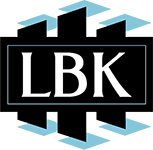[suffusion-widgets id=’4′]
Below are OSHA’s forklift training topics and refresher training requirements. Click the link to be directed to the specific OSHA regulations.
Truck-Related Topics | Workplace-Related Topics | Refresher Training
OSHA Forklift Training, Forklift-Related Topics
1910.178(l)(3)(i) Truck-related topics:
1910.178(l)(3)(i)(A) Operating instructions, warnings, and precautions for the types of truck the operator will be authorized to operate;
1910.178(l)(3)(i)(B) Differences between the truck and the automobile;
1910.178(l)(3)(i)(C) Truck controls and instrumentation: where they are located, what they do, and how they work;
1910.178(l)(3)(i)(D) Engine or motor operation;
1910.178(l)(3)(i)(E) Steering and maneuvering;
1910.178(l)(3)(i)(F) Visibility (including restrictions due to loading);
1910.178(l)(3)(i)(G) Fork and attachment adaptation, operation, and use limitations;
1910.178(l)(3)(i)(H) Vehicle capacity;
1910.178(l)(3)(i)(I) Vehicle stability;
1910.178(l)(3)(i)(J) Any vehicle inspection and maintenance that the operator will be required to perform;
1910.178(l)(3)(i)(K) Refueling and/or charging and recharging of batteries;
1910.178(l)(3)(i)(L) Operating limitations;
1910.178(l)(3)(i)(M) Any other operating instructions, warnings, or precautions listed in the operator’s manual for the types of vehicle that the employee is being trained to operate.
OSHA Forklift Training, Workplace-Related Topics
1910.178(l)(3)(ii) Workplace-related topics:
1910.178(l)(3)(ii)(A) Surface conditions where the vehicle will be operated;
1910.178(l)(3)(ii)(B) Composition of loads to be carried and load stability;
1910.178(l)(3)(ii)(C) Load manipulation, stacking, and unstacking;
1910.178(l)(3)(ii)(D) Pedestrian traffic in areas where the vehicle will be operated;
1910.178(l)(3)(ii)(E) Narrow aisles and other restricted places where the vehicle will be operated;
1910.178(l)(3)(ii)(F) Hazardous (classified) locations where the vehicle will be operated;
1910.178(l)(3)(ii)(G) Ramps and other sloped surfaces that could affect the vehicle’s stability;
1910.178(l)(3)(ii)(H) Closed environments and other areas where insufficient ventilation or poor vehicle maintenance could cause a buildup of carbon monoxide or diesel exhaust;
1910.178(l)(3)(ii)(I) Other unique or potentially hazardous environmental conditions in the workplace that could affect safe operation.
OSHA Forklift Training, Refresher Training Requirements
1910.178(l)(4)(ii) Refresher training in relevant topics shall be provided to the operator when:
1910.178(l)(4)(ii)(A) The operator has been observed to operate the vehicle in an unsafe manner;
1910.178(l)(4)(ii)(B) The operator has been involved in an accident or near-miss incident;
1910.178(l)(4)(ii)(C) The operator has received an evaluation that reveals that the operator is not operating the truck safely;
1910.178(l)(4)(ii)(D) The operator is assigned to drive a different type of truck; or
1910.178(l)(4)(ii)(E) A condition in the workplace changes in a manner that could affect safe operation of the truck.
1910.178(l)(4)(iii) An evaluation of each powered industrial truck operator’s performance shall be conducted at least once every three years.
For more information, please contact our forklift accident lawyers at Click To Call.
Related: Recent Forklift Accident Deaths (As of March 2014)
DISCLAIMER: This website does not create any attorney-client relationship or provide legal advice. It is crucial to speak to a qualified lawyer prior to making any decision about your case. Read full disclaimer at the bottom of this page.

